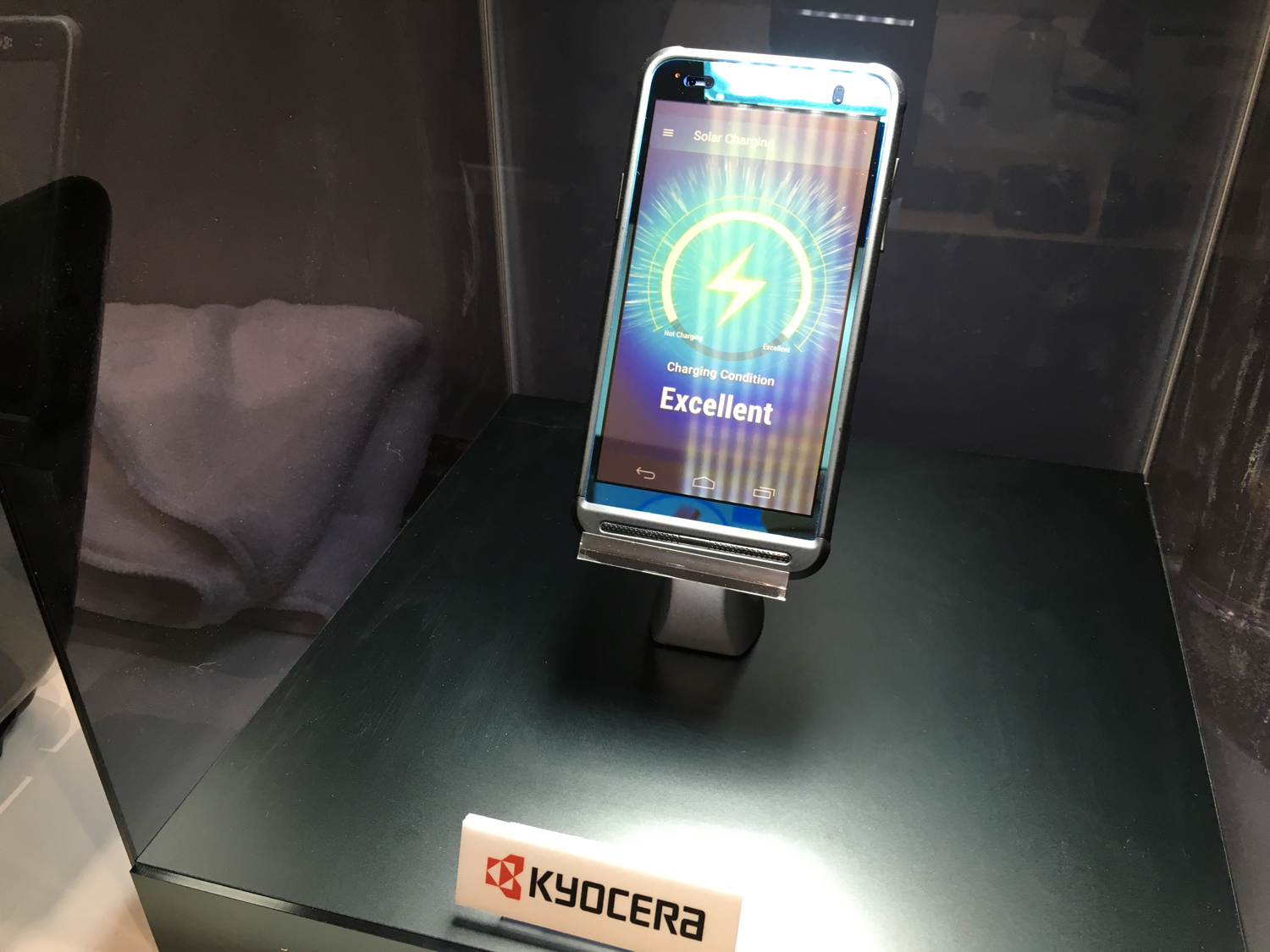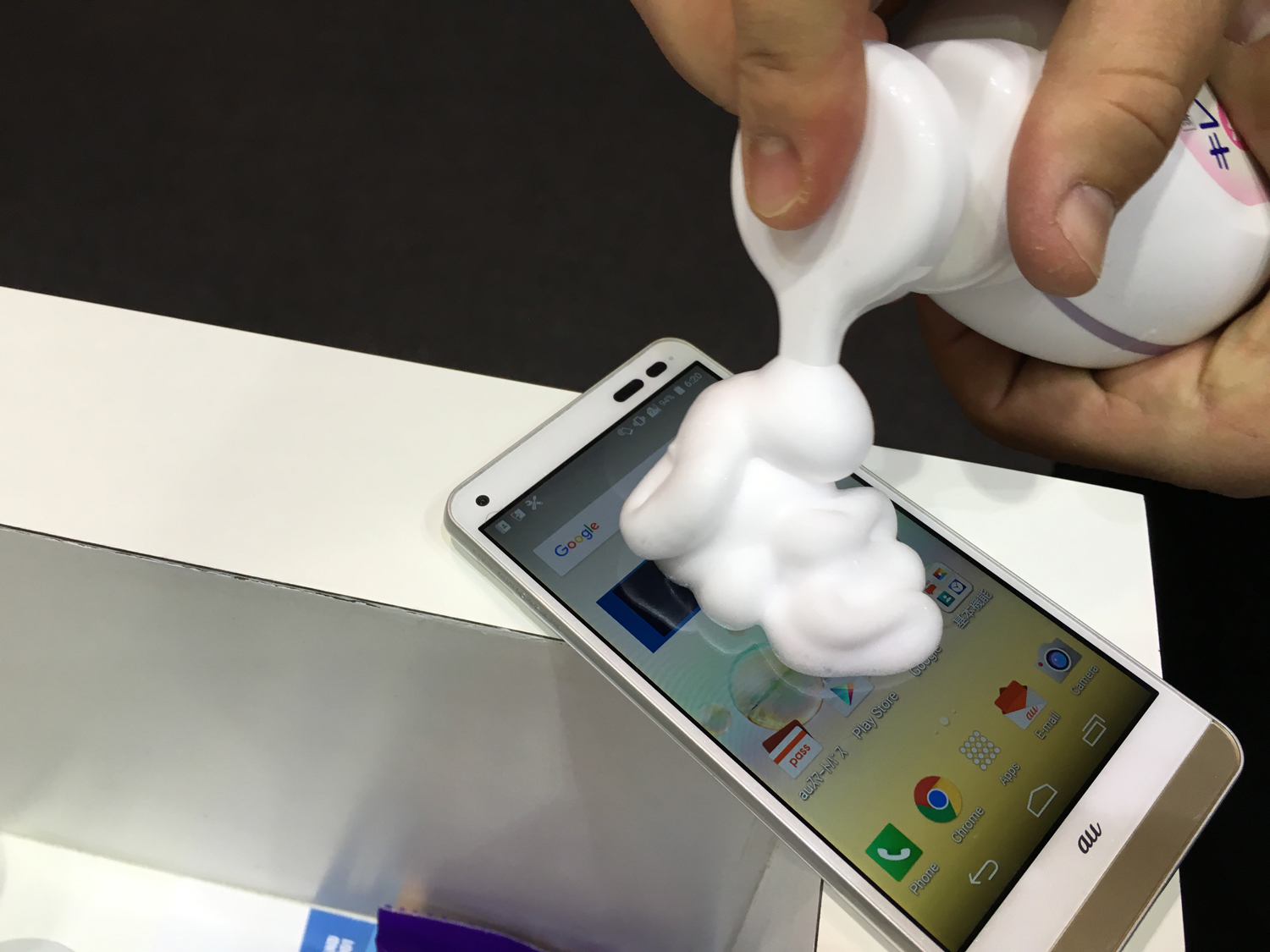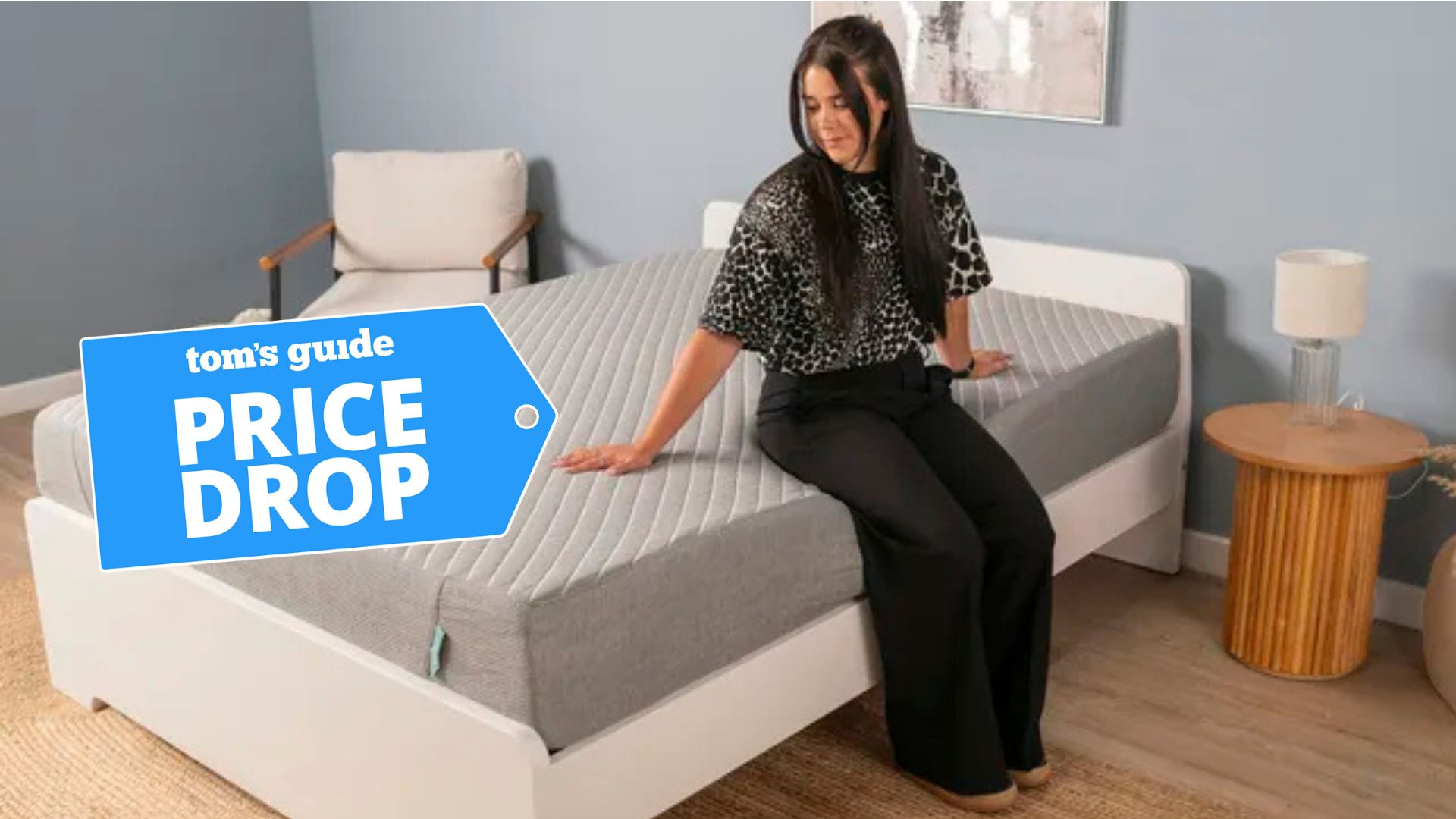This Phone Turns Sunshine Into Power
Kyocera's prototype phone can turn three minutes of sun exposure into one minute of talk time.
BARCELONA, Spain — The sun rises and sets 365 times in most years. In that time, Kyocera figured out how to harness more of the sun to help power a smartphone.

A year ago, the durable phone specialist showed up at Mobile World Congress with a prototype for a device that could absorb sunlight on its screen and turn that into additional battery power. It was a promising idea but a very early prototype: two hours of sunlight only produced 15 minutes of talk time.
What a difference a year makes. At the 2016 edition of MWC, Kyocera is back with its sun-powered phone. Only this time, the phone maker can now generate a minute of talk time with just three minutes of sunlight. The sunlight exposure-to-talk time ratio has narrowed from 8:1 down to 3:1.
MORE: iPhone 7 Rumors - All the New Features Coming Your Way
To demonstrate the technology at work, Kyocera created a customized app that shows when the phone is abosrbing the sun's rays. Under the lights of the MWC exhibition hall, the prototype phone wasn't picking up anything, but once it was inserted into a box that simulated sunlight, the phone started to charge.
Kyocera isn't ready to commercialize the technology yet, though that's on the horizon, Kyocera director of corporate communication John Chier says. And don't expect sunlight to replace your battery any time soon. Rather, Chier says, this technology is analogous to a hybrid car, with sunlight playing the role of the car's electric charge. "You put gas in the car, but you use electricity to extend the life of a tank of gas."
To soak up the sun's energy, Kyocera uses a 0.55-mm thin photovoltaic component from France-based Sunpartner Technologies. Sunpartner's Wysips Crystal panel captures ambient light to electricity. Kyocera inserts that panel into the display stack, with an eye toward not losing any of the power the panel has absorbed as it makes its way to the battery.
Kyocera is hardly the first phone make to tap into the sun's power, though most do so by putting panels on the phone's back. That's a flawed approach, Chier says. For one thing, most of the time the phone's back is facing away from the sun. For another, there's the question of durability, as the back of your phone can take quite a beating over the course of daily use — more so than most solar panels can bear.
Durability is very much on the mind of Kyocera, which focuses on making phones that can endure tough conditions like construction sites. Adding solar charging capabilities fits right in with that mission, as you'd be able to continue to make calls or use GPS even when you were nowhere near a power source.

Kyocera also showed off the Digno Rafre, a phone launched by the company in Japan last year that's washable with soap and water. You probably already know that water and electronics typically don't mix, but soap can be just as problematic, causing rubber to crack and seals to break. Yet, Chier was able to squirt a large dollop of liquid soap all over the Digno Rafre's screen and then rinse it down in a sink without the phone appearing any worse for the wear.
There's a practical purpose to this beyond just providing a cool-looking demo. From people who use their smartphones to look up recipes while cooking to doctors and nurses who need to keep their mobile devices just as clean as their hands, there's plenty of demand for a device that can be cleaned up without any special materials.
"We won't win any benchmark tests or beauty contests," Chier says. "All of the innovations we're doing are built around usability and solving real-world challenges."
Sign up to get the BEST of Tom's Guide direct to your inbox.
Get instant access to breaking news, the hottest reviews, great deals and helpful tips.
Philip Michaels is a Managing Editor at Tom's Guide. He's been covering personal technology since 1999 and was in the building when Steve Jobs showed off the iPhone for the first time. He's been evaluating smartphones since that first iPhone debuted in 2007, and he's been following phone carriers and smartphone plans since 2015. He has strong opinions about Apple, the Oakland Athletics, old movies and proper butchery techniques. Follow him at @PhilipMichaels.

